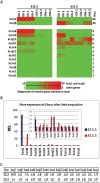Potassium channels as potential drug targets for limb wound repair and regeneration
- PMID: 32257531
- PMCID: PMC7093894
- DOI: 10.1093/pcmedi/pbz029
Potassium channels as potential drug targets for limb wound repair and regeneration
Abstract
Background: Ion channels are a large family of transmembrane proteins, accessible by soluble membrane-impermeable molecules, and thus are targets for development of therapeutic drugs. Ion channels are the second most common target for existing drugs, after G protein-coupled receptors, and are expected to make a big impact on precision medicine in many different diseases including wound repair and regeneration. Research has shown that endogenous bioelectric signaling mediated by ion channels is critical in non-mammalian limb regeneration. However, the role of ion channels in regeneration of limbs in mammalian systems is not yet defined.
Methods: To explore the role of potassium channels in limb wound repair and regeneration, the hindlimbs of mouse embryos were amputated at E12.5 when the wound is expected to regenerate and E15.5 when the wound is not expected to regenerate, and gene expression of potassium channels was studied.
Results: Most of the potassium channels were downregulated, except for the potassium channel kcnj8 (Kir6.1) which was upregulated in E12.5 embryos after amputation.
Conclusion: This study provides a new mouse limb regeneration model and demonstrates that potassium channels are potential drug targets for limb wound healing and regeneration.
Keywords: drug targets; gene expression; limb regeneration; potassium channels; wound healing.
© The Author(s) [2019]. Published by Oxford University Press on behalf of West China School of Medicine & West China Hospital of Sichuan University.
Figures





References
Grants and funding
LinkOut - more resources
Full Text Sources
Other Literature Sources
